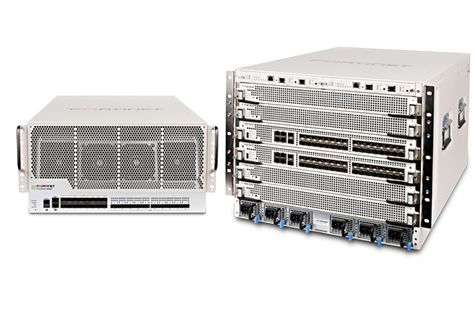Fortinet firewalls are among the most trusted network security solutions, offering advanced protection for businesses of all sizes. However, simply deploying a Fortinet firewall isn’t enough; proper configuration is essential to maximize its security potential. In this article, we will walk you through the steps to configure a Fortinet firewall dubai for optimal security, ensuring that your network remains protected from potential threats.
1. Initial Setup and Access
a. Physical and Network Connection
Start by physically connecting the Fortinet firewall to your network. Connect one end of the Ethernet cable to the firewall’s WAN port and the other to your internet modem or gateway. Then, connect your computer to the LAN port using another Ethernet cable.
b. Accessing the Firewall Interface
To configure the firewall, access the web-based interface:
- Open a web browser and enter the default IP address (e.g.,
192.168.1.99). - Log in with the default credentials (username:
admin, password: blank). - For security reasons, change the admin password immediately after logging in. Go to System > Administrators, select the admin account, and update the password.
2. Updating Firmware
Keeping your Fortinet firewall firmware up-to-date is critical to protecting your network from newly discovered vulnerabilities. To update the firmware:
- Go to System > Firmware.
- Check for available updates and download the latest version from the Fortinet support site.
- Upload the firmware and follow the on-screen instructions to complete the update.
3. Configuring Basic Settings
a. Network Settings
Set up basic network configurations:
- Go to Network > Interfaces and configure WAN and LAN interfaces with appropriate IP addresses and subnet masks.
- Set the default gateway and DNS servers under Network > Static Routes.
b. Time and Date
Correct time settings are essential for logging and system operations:
- Go to System > Settings.
- Configure the correct time zone and enable NTP synchronization.
4. Implementing Access Controls
a. Firewall Policies
Firewall policies control traffic between network interfaces. Create and organize policies to enforce security rules:
- Navigate to Policy & Objects > Firewall Policy.
- Add a new policy, specifying the source and destination interfaces, IP addresses, and allowed services.
- Set action to “Accept” or “Deny” based on your requirements.
- Enable logging for traffic to analyze and monitor usage.
b. NAT (Network Address Translation)
If your network requires NAT, configure it to translate private IP addresses to public ones. Go to Policy & Objects > NAT, and set up the appropriate NAT rules.
5. Enhancing Security with Advanced Features
a. Enabling Intrusion Prevention System (IPS)
IPS protects your network from known vulnerabilities and attacks:
- Go to Security Profiles > Intrusion Prevention.
- Enable and configure predefined IPS signatures or create custom profiles.
- Apply the IPS profile to relevant firewall policies.
b. Web Filtering
Web filtering blocks access to malicious or inappropriate websites:
- Navigate to Security Profiles > Web Filter.
- Enable URL filtering, and configure category-based or custom filters.
- Assign the web filter profile to firewall policies.
c. Antivirus and Application Control
To block malware and unwanted applications:
- Go to Security Profiles > Antivirus and enable scanning for incoming and outgoing traffic.
- Configure Security Profiles > Application Control to restrict applications based on business requirements.
- Apply both profiles to firewall policies.
6. Configuring VPN for Secure Remote Access
Virtual Private Network (VPN) enables secure connections for remote users. Fortinet supports various VPN types, such as SSL VPN and IPsec VPN:
- For SSL VPN, go to VPN > SSL-VPN Settings and configure the portal and authentication options.
- For IPsec VPN, navigate to VPN > IPsec Wizard and follow the step-by-step guide to set up tunnels.
7. Enabling Two-Factor Authentication (2FA)
Two-factor authentication adds an extra layer of security:
- Go to User & Device > Two-Factor Authentication.
- Enable 2FA for admin and user accounts by integrating with FortiToken or third-party authentication solutions.
8. Monitoring and Logging
a. Real-Time Monitoring
Use FortiView for real-time visibility into network traffic and threats:
- Navigate to Dashboard > FortiView to analyze data.
b. Logging and Reporting
Enable logging to track events and troubleshoot issues:
- Go to Log & Report > Log Settings.
- Configure log storage and enable alerts for critical events.
9. Regular Maintenance and Best Practices
a. Backups
Regularly back up your configuration to prevent data loss:
- Go to System > Settings > Backup & Restore.
- Save backups locally or to a secure external location.
b. Security Audits
Periodically review your firewall rules, policies, and logs to identify outdated configurations or potential vulnerabilities.
c. Training and Documentation
Ensure your IT team is well-trained to manage the firewall effectively. Maintain detailed documentation of configurations for quick reference.
Conclusion
Configuring a Fortinet firewall for optimal security involves careful planning and implementation of both basic and advanced features. By following the steps outlined in this guide, you can create a robust defense against cyber threats while maintaining efficient network operations. Remember that security is an ongoing process; regular updates, monitoring, and audits are essential to keeping your network safe.

